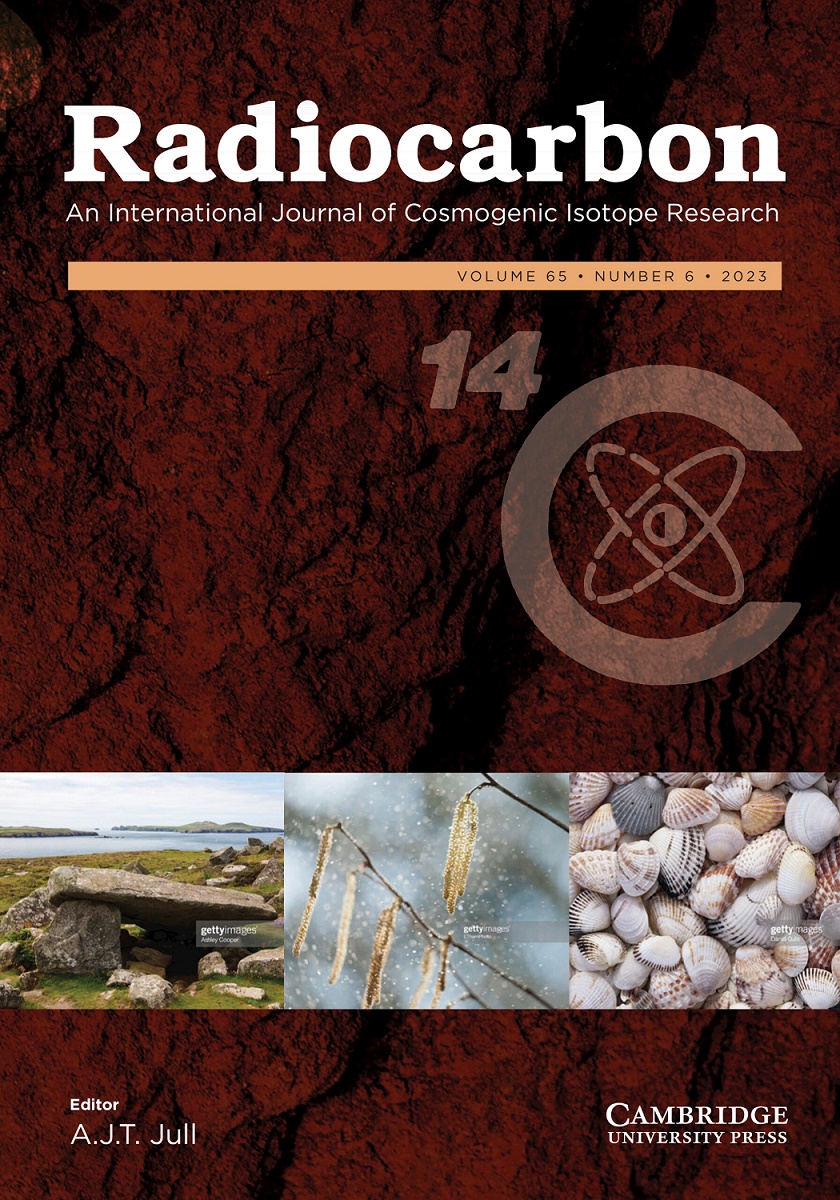土壤碳储量与老林和邻近草原的地上垃圾输入量和化学性质无关
IF 1.3
3区 地球科学
Q2 GEOCHEMISTRY & GEOPHYSICS
引用次数: 0
摘要
长期以来,人们一直认为地上植物枯落物对土壤有机碳储存(SOC)和动态具有重要影响,但这一观点受到了 SOC 形成和持久性新模式的挑战。我们通过比较两个高度反差的生态系统,测试了植物枯落物化学性质对 SOC 储量、分布、组成和年龄的重要性:一个是枯落物芳香度极高的老龄海岸红杉(Sequoia sempervirens)林,另一个是枯落物更易分解的邻近沿海大草原。我们假设,如果植物枯落物的化学性质是主要的驱动因素,那么红杉将比草原储存更多更老的经微生物处理较少的 SOC。草原 110 厘米深处的土壤总碳储量(35 千克碳平方米-2)高于红杉(28 千克碳平方米-2)。放射性碳值表明,在整个剖面中,红杉的 SOC 停留时间比草原短。较高的热源碳含量和微生物对 SOC 的较高处理程度似乎有助于草原土壤碳的储存和持久性,而细根碳输入量的差异很可能导致红豆杉中的 SOC 更年轻。我们的结论是,在这些地点,火灾残留物、根系输入和土壤特性对土壤碳动态的影响程度要大于地上垃圾的特性。本文章由计算机程序翻译,如有差异,请以英文原文为准。
SOIL CARBON STOCKS NOT LINKED TO ABOVEGROUND LITTER INPUT AND CHEMISTRY OF OLD-GROWTH FOREST AND ADJACENT PRAIRIE
The long-standing assumption that aboveground plant litter inputs have a substantial influence on soil organic carbon storage (SOC) and dynamics has been challenged by a new paradigm for SOC formation and persistence. We tested the importance of plant litter chemistry on SOC storage, distribution, composition, and age by comparing two highly contrasting ecosystems: an old-growth coast redwood (Sequoia sempervirens ) forest, with highly aromatic litter, and an adjacent coastal prairie, with more easily decomposed litter. We hypothesized that if plant litter chemistry was the primary driver, redwood would store more and older SOC that was less microbially processed than prairie. Total soil carbon stocks to 110 cm depth were higher in prairie (35 kg C m−2 ) than redwood (28 kg C m−2 ). Radiocarbon values indicated shorter SOC residence times in redwood than prairie throughout the profile. Higher amounts of pyrogenic carbon and a higher degree of microbial processing of SOC appear to be instrumental for soil carbon storage and persistence in prairie, while differences in fine-root carbon inputs likely contribute to younger SOC in redwood. We conclude that at these sites fire residues, root inputs, and soil properties influence soil carbon dynamics to a greater degree than the properties of aboveground litter.
求助全文
通过发布文献求助,成功后即可免费获取论文全文。
去求助
来源期刊

Radiocarbon
地学-地球化学与地球物理
CiteScore
16.20
自引率
6.00%
发文量
85
审稿时长
6-12 weeks
期刊介绍:
Radiocarbon serves as the leading international journal for technical and interpretive articles, date lists, and advancements in 14C and other radioisotopes relevant to archaeological, geophysical, oceanographic, and related dating methods. Established in 1959, it has published numerous seminal works and hosts the triennial International Radiocarbon Conference proceedings. The journal also features occasional special issues. Submissions encompass regular articles such as research reports, technical descriptions, and date lists, along with comments, letters to the editor, book reviews, and laboratory lists.
 求助内容:
求助内容: 应助结果提醒方式:
应助结果提醒方式:


